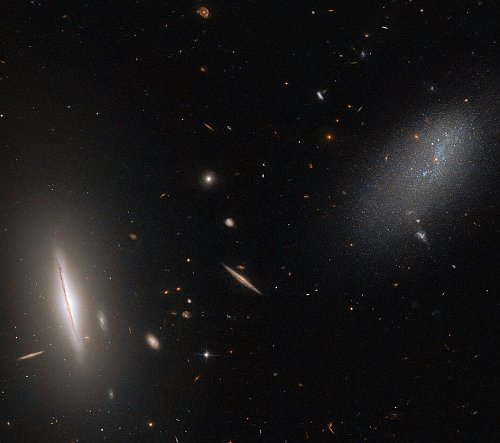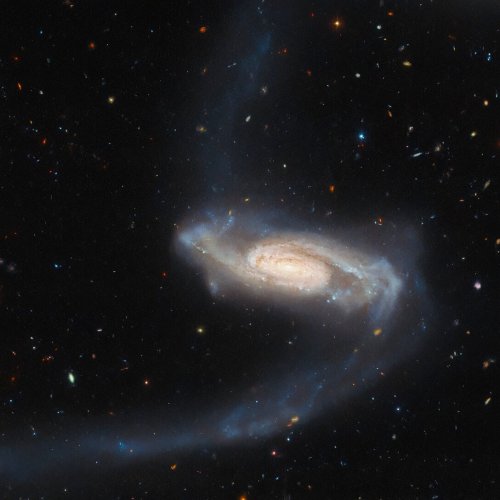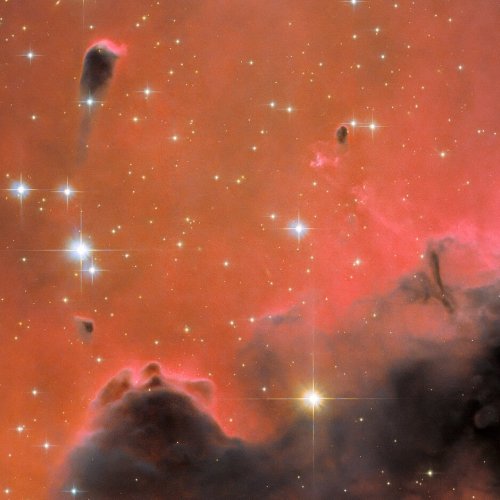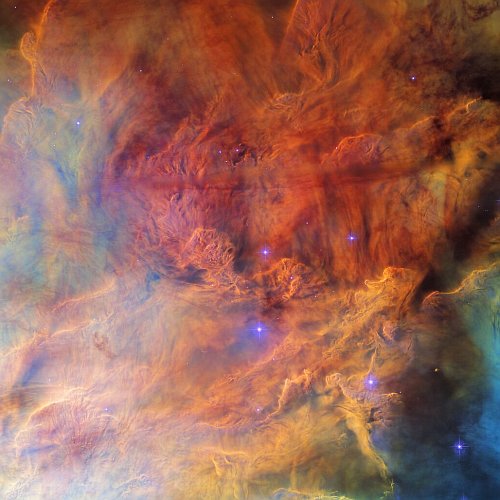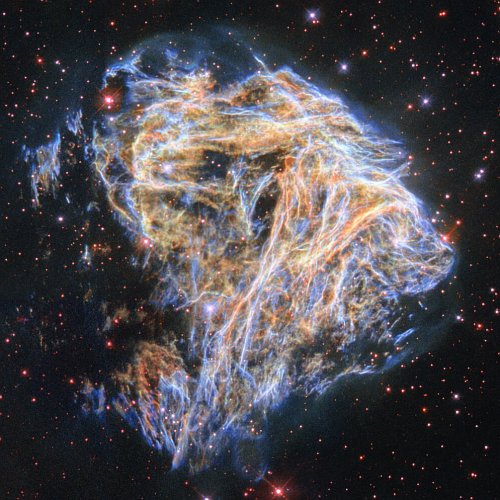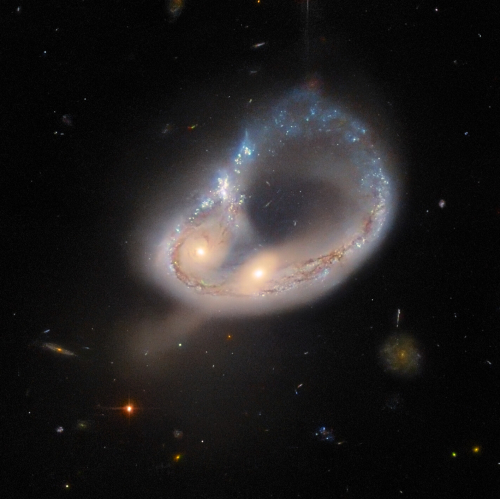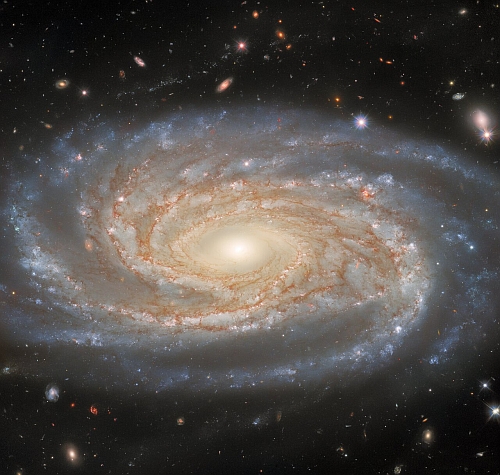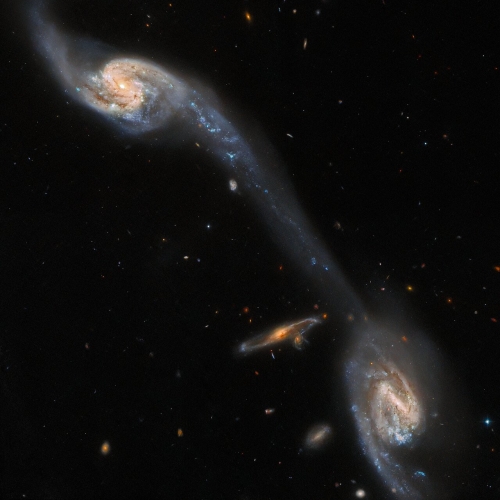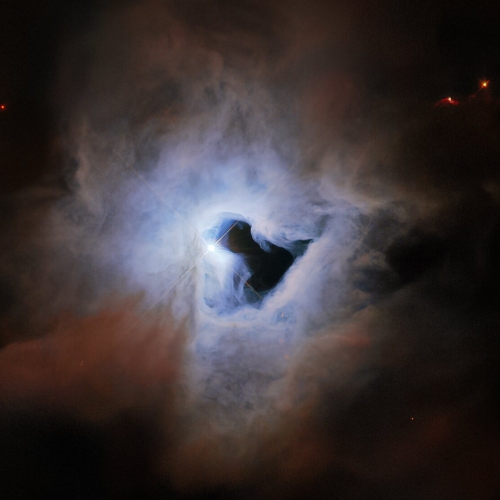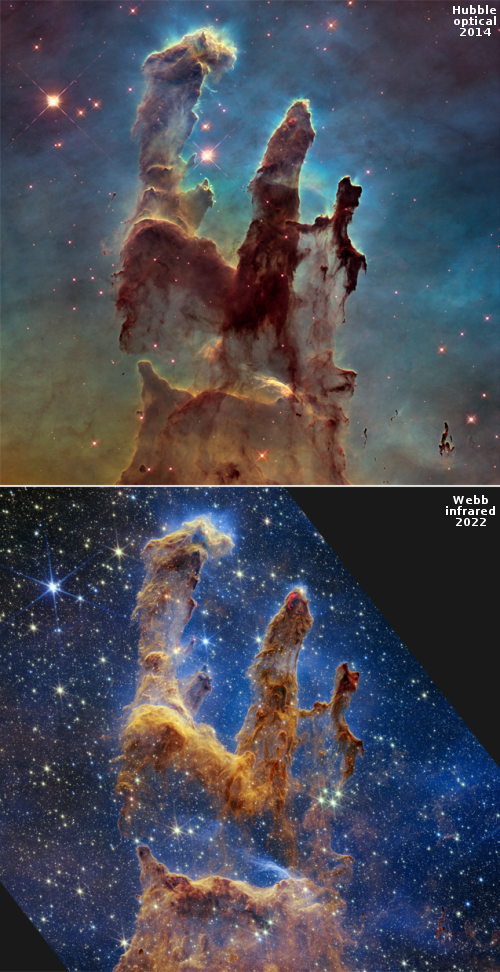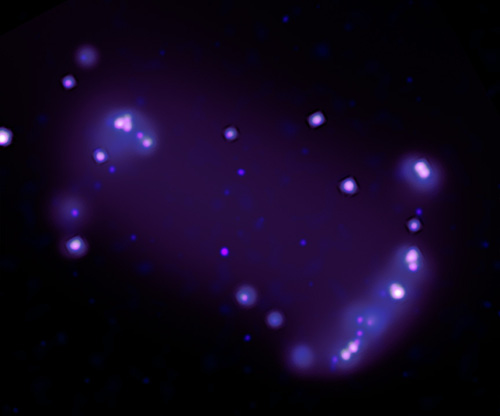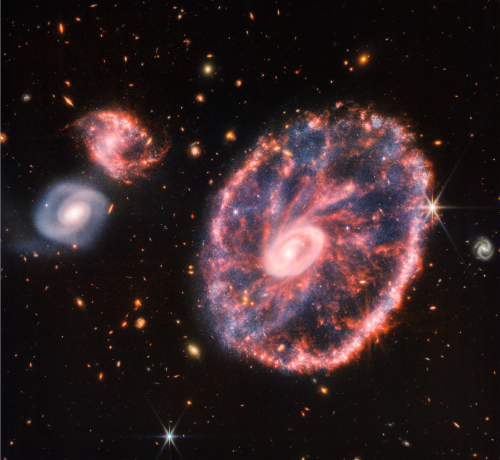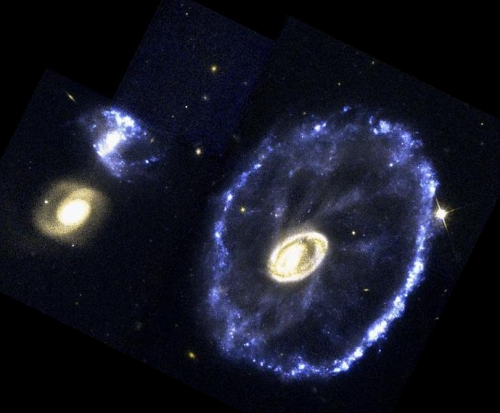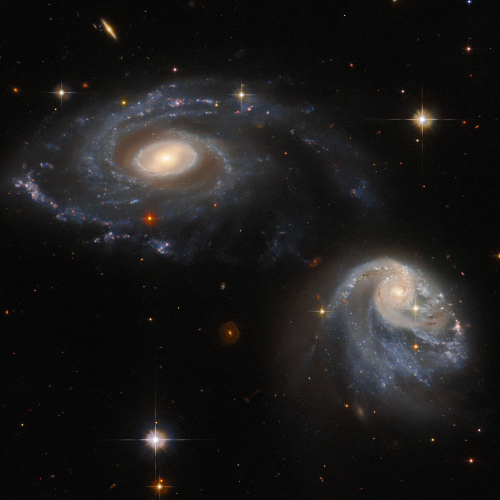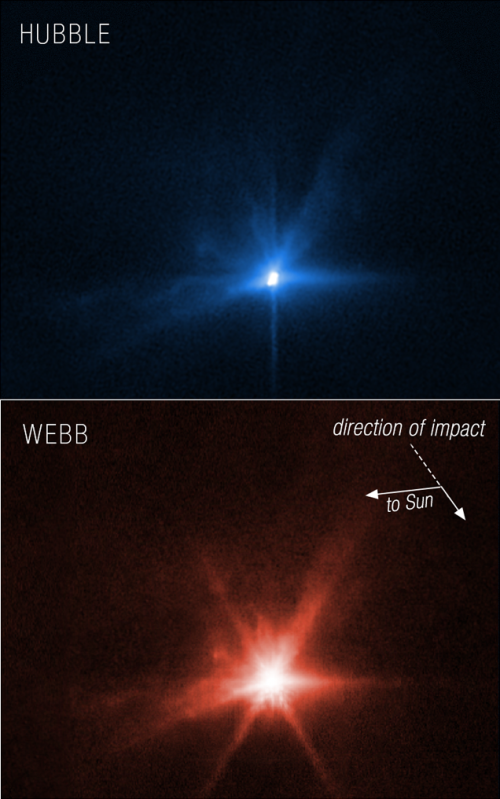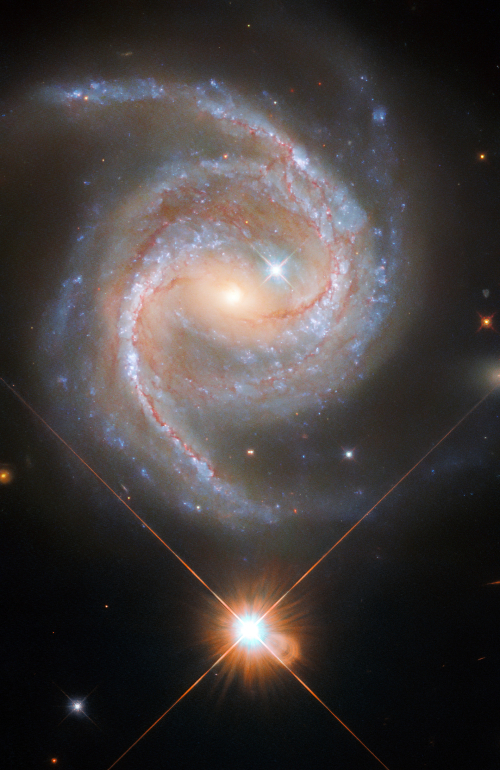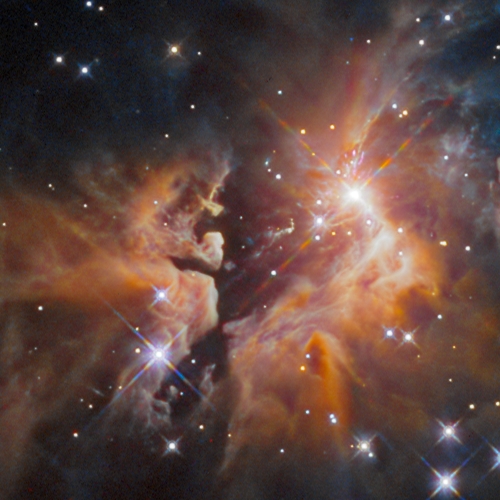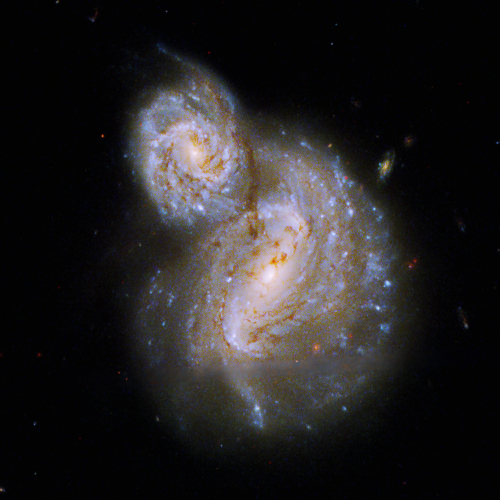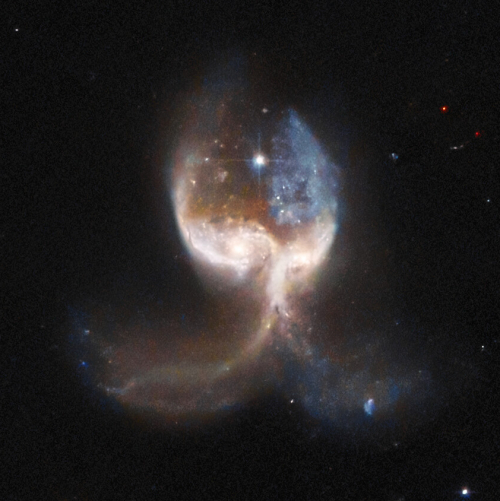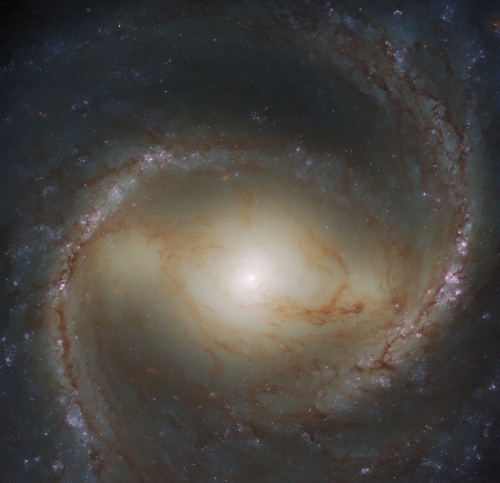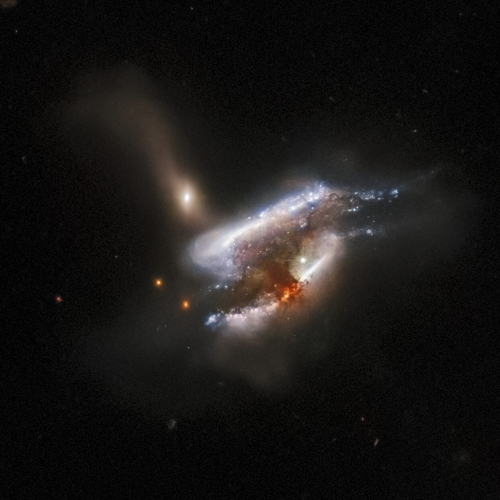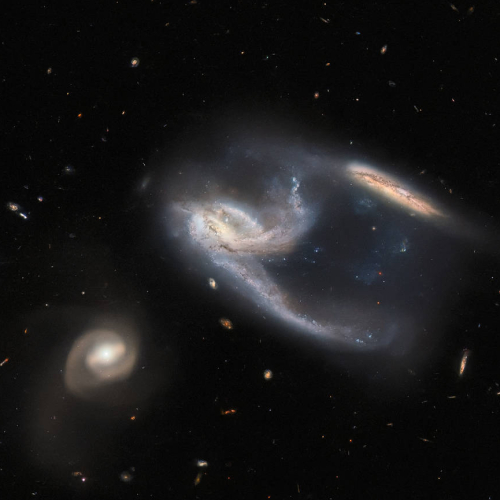Two nearby galactic neighbors
Cool image time! The photo to the right, cropped, reduced, and sharpened to post here, was taken by the Hubble Space Telescope of two nearby galaxy neighbors to the Milky way.
This image from the NASA/ESA Hubble Space Telescope features the galaxy LEDA 48062 in the constellation Perseus. LEDA 48062 is the faint, sparse, amorphous galaxy on the right side of this image, and it is accompanied by a more sharply defined neighbour on the left, the large, disc-like lenticular galaxy UGC 8603. A smattering of more distant galaxies also litter the background, and a handful of foreground stars are also visible throughout the image.
LEDA 48062 is estimated to be approximately 30 million light years away. This image was part of a recent Hubble campaign to study every known galaxy within 33 million light years.
Assuming that UGC 8603 is about the same approximate distance, the utter dissimilarity between these two galaxies is quite mystifying. It is also possible that UGC 8603 is larger and much farther away.
Cool image time! The photo to the right, cropped, reduced, and sharpened to post here, was taken by the Hubble Space Telescope of two nearby galaxy neighbors to the Milky way.
This image from the NASA/ESA Hubble Space Telescope features the galaxy LEDA 48062 in the constellation Perseus. LEDA 48062 is the faint, sparse, amorphous galaxy on the right side of this image, and it is accompanied by a more sharply defined neighbour on the left, the large, disc-like lenticular galaxy UGC 8603. A smattering of more distant galaxies also litter the background, and a handful of foreground stars are also visible throughout the image.
LEDA 48062 is estimated to be approximately 30 million light years away. This image was part of a recent Hubble campaign to study every known galaxy within 33 million light years.
Assuming that UGC 8603 is about the same approximate distance, the utter dissimilarity between these two galaxies is quite mystifying. It is also possible that UGC 8603 is larger and much farther away.

